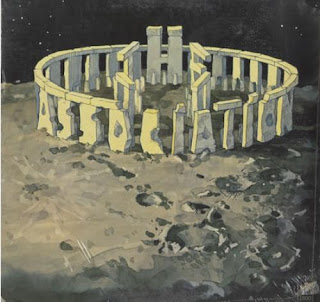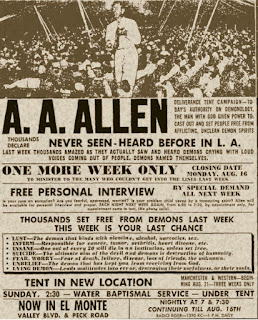 Hailing from Kansas the Concrete Rubber Band produced just one original album – but what a record it is: Risen Savior is- by far - the best badly produced and performed psychedelic gospel record you will hear in your life.
Hailing from Kansas the Concrete Rubber Band produced just one original album – but what a record it is: Risen Savior is- by far - the best badly produced and performed psychedelic gospel record you will hear in your life.Issued in 1974 by the Missouri-based American Artists label (AAS1164), this downright peculiar album is Christian psychedelia at its most extreme, with loads of Doors-esque organ riffs, fuzz guitar a la Junior and his Soulettes, male and female lead vocals that make you want to slit your wrists and what one reissue site has labelled ‘synthesized bubbling lava pits, frequency oscillations, distorted sci-fi vocals and short-wave static patterns’. This garage band recording is muddy, distorted and positively reeks of amateurism, yet the Concrete Rubber Band had been making music together for a number of years before they got around to delivering their debut (and so far, sole) album.
The hyper-Christian Shaggs comprised of Duncan Long, synth, electric guitar and co-author (along with his father) of all of the songs, Bob Rhodes, the drummer and Duncan’s sister Jan, the mid-price Manzarek behind the organ who also adds the female vocals. The three, from the small town of Alden, all went to the same school and the same church. ‘We didn’t perform at a lot of places,’ Duncan reveals on his own website. ‘A lot of our music was religious, but our sound was a bit too wild for any church group to sponsor us, and we didn’t want to play at dances for various reasons, but mostly because most kids only wanted dance music that they’d heard on the radio. A few brave churches, coffee houses, and youth groups asked us to play our set of songs.’
Recorded in the Long’s living room on a stereo reel-to-reel tape recorder with only the most primitive of overdub capabilities, only 500 copies of this minor masterpiece were pressed, with most of those given away free to family, friends and at gigs. Bootlegged twice, the album was officially reissued on CD – along with a dozen bonus tracks – in 2007. Copies of the original album have sold for over $2,000.
Shortly after the release of Risen Savior Jan decided to go to law school and the band split. After spending almost a decade teaching (rewarding his favourite students with copies of his masterwork), Duncan Long is now a successful graphic artist and sci-fi author; sister Jan became involved in local politics and, as Janice Pauls, is now a Republican member of the Kansas state legislature, and a keen suppressor of LGBT rights. Drummer Bob retired from the music business, moved to Colorado and raised a family.
You can read a great interview with Duncan Long on his CRB days at author Stu Shea's Ten Records blog.
For Duncan’s personal take on the whole CRB legend read his reminiscences here
The official reissue of Risen Savior is available to buy from Green Tree Records with 12 bonus tracks.
To get you in the mood, and persuade you to spend your shekels, here are a couple of tracks from Risen Savior – Christian and the album’s opener What Shall We Do?
Enjoy!






















